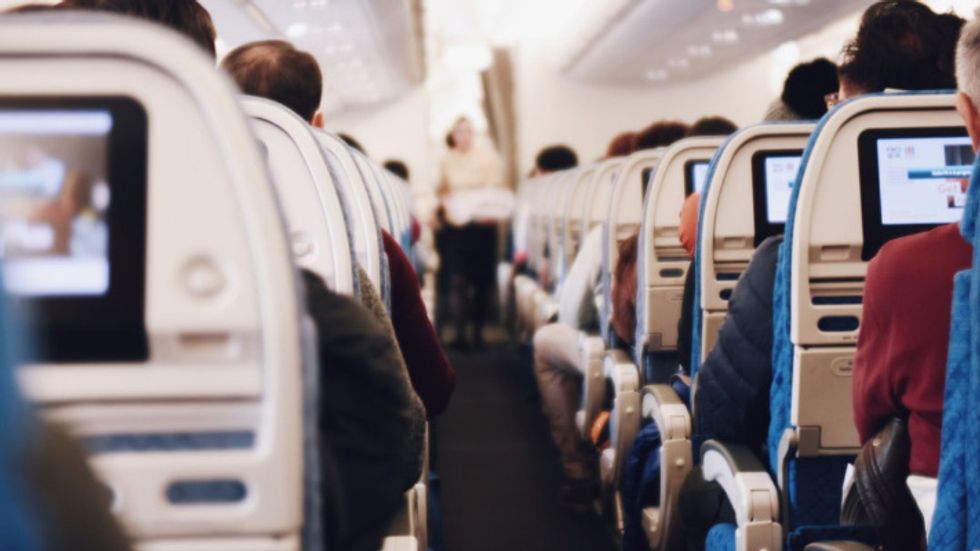How Musk And Trump Undermined Air Safety Before Fatal Crash
As the nation begins to grapple with and mourn what reportedly are more than 60 deaths from a late Wednesday night mid-air collision over Ronald Reagan Washington National Airport, some are also grappling with the response from President Donald Trump.
“No one is believed to have survived the midair collision between an American Airlines jet plane and a US Army Black Hawk helicopter last night in the Washington, DC, area, the fire chief said Thursday. President Donald Trump is expected to address the tragedy this morning at the White House Briefing Room,” CNN reported.
The White House put out a statement from President Trump just before 11 PM Wednesday that read: “I have been fully briefed on the terrible accident which just took place at Reagan National Airport. May God Bless their souls. Thank you for the incredible work being done by our first responders. I am monitoring the situation and will provide more details as they arise.”
But just after midnight, on his Truth Social website, Donald Trump shared this message.
“The airplane was on a perfect and routine line of approach to the airport. The helicopter was going straight at the airplane for an extended period of time. It is a CLEAR NIGHT, the lights on the plane were blazing, why didn’t the helicopter go up or down, or turn. Why didn’t the control tower tell the helicopter what to do instead of asking if they saw the plane. This is a bad situation that looks like it should have been prevented. NOT GOOD!!!”
Critics are blasting Trump for his Truth Social post.
HuffPost White House correspondent S.V. Dáte posted screenshots of both statements and commented: “What people in the WH want you to think the president thinks,” and, “What the president actually thinks.”
“One of the paradoxes of Trump’s conception of the presidency: he somehow requires absolute and unchecked power, but also seems to think of himself as a passive, tut-tutting observer when the government over which he has that absolute power fails in any way,” observed New York Times opinion columnist Lydia Polgreen, in response to Trump’s social media post. Polgreen is a co-author of the recent Times piece, “Trump Is at His Absolute Worst in a Crisis.”
Amy McGrath, a former Marine fighter pilot and former Democratic political candidate responded to Trump’s remarks: “This is not what our president should be doing or saying right now.”
“The President is asking rhetorical questions about what federal gov’t aircraft was doing, as if someone else should have the answers. This is his responsibility. If he doesn’t know the answers, it’s because he and his unqualified DoD & DoT appointees are incompetent,” declared attorney Max Kennerly.
Bloomberg columnist Matthew Yglesias added: “One of Trump’s weirdest bits from Covid was constantly acting like someone else was the president and he’s just a prominent guy raising questions about what the government is doing.”
Others pointed to Trump’s recent actions.
“First aviation disaster in US since 2009 and if it had been under Biden,” Moe Davis, a retired U.S. Air Force colonel, attorney, educator, politician, and former administrative law judge wrote. He add that Trump “would yell incompetence and say wouldn’t happen if he was President.”
Davis also noted that the head of the Federal Aviation Administration (FAA) was “pushed out” by Elon Musk, and that “Trump killed” the Aviation Safety Committee, “fired” the head of the Transportation Security Administration (TSA), and “froze air traffic control hiring.”
On Thursday, The Daily Beast reported, “The Federal Aviation Administration’s leader stepped down on Jan. 20, months after Elon Musk demanded that he quit,” and noted that the “move by Michael Whitaker means the FAA has no Senate-confirmed leader for one of the biggest crises in its history because he quit before Donald Trump took office.”
Back in September, Musk tweeted that Whitaker “needs to resign.”
According to the Associated Press, last week “President Donald Trump moved quickly to remake the Department of Homeland Security Tuesday, firing the heads of the Transportation Security Administration and Coast Guard before their terms are up and eliminated all the members of a key aviation security advisory group.”
The AP explained that the “aviation security committee, which was mandated by Congress after the 1988 PanAm 103 bombing over Lockerbie, Scotland, will technically continue to exist but it won’t have any members to carry out the work of examining safety issues at airlines and airports. Before Tuesday, the group included representatives of all the key groups in the industry — including the airlines and major unions — as well as members of a group associated with the victims of the PanAm 103 bombing. The vast majority of the group’s recommendations were adopted over the years.”
Stephanie Bernstein, whose husband was killed in the bombing and served on the committee, told the AP, “I naively thought, ‘oh they’re not going to do anything in the new administration, to put security at risk — aviation security at risk.’ But I’m not so sure.”
Shannon Watts, a speaker, organizer, and anti-gun violence activist wrote: “Dems should call for immediate hearings on what caused tonight’s plane crash, including the impact of the removal of FAA safety protocols and personnel.”
Reprinted with permission from Alternet.












